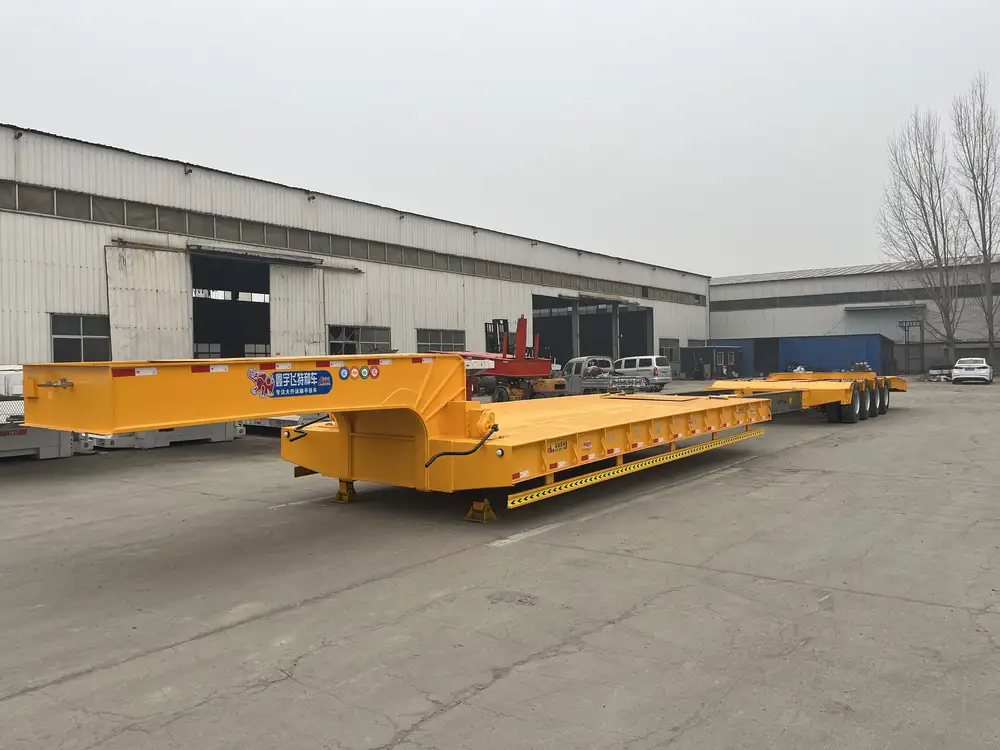Releasing the brakes on a semi-trailer is a fundamental skill for drivers, ensuring not only their safety but also the efficiency of their operations. This guide will delve deeply into the mechanics of semi-trailer brakes, highlighting the different brake systems in use today. We will provide a step-by-step process to release the brakes and remedy common issues faced by operators.
Understanding Semi-Trailer Brake Systems
Before we break down how to release semi-trailer brakes, it is crucial to understand the systems involved.
Types of Braking Systems
Air Brakes
- Description: Predominantly used in heavy-duty vehicles, air brakes rely on compressed air to operate.
- Components: Includes the air compressor, air reservoir, brake chambers, and slack adjusters.
- Advantages: Provides strong stopping power, especially useful in larger vehicles.
Hydraulic Brakes
- Description: These brakes employ hydraulic fluid and are more common in lighter vehicles, but some semi-trailers utilize hydraulic systems.
- Components: Master cylinder, brake lines, and wheel cylinders.
- Advantages: Offers smoother, quicker responses.
Trailer Brakes (Electric or Hydraulic)
- Description: Utilized mainly in trailers and can be either electric or hydraulic.
- Components: Electric components or hydraulic brake actuators.
- Advantages: Provides an additional layer of braking for safer stopping.

Common Components of Brake Systems
| Component | Function |
|---|---|
| Brake Chamber | Converts air pressure into mechanical force to engage the brakes. |
| Slack Adjuster | Adjusts the distance between the brake shoes and the drum or disc. |
| Air Compressor | Supplies compressed air to the brake system. |
| Reservoir | Stores compressed air for the braking system. |
Step-by-Step Guide on How to Release Semi-Trailer Brakes
Preparing the Semi-Trailer
Ensure Safety First
- Conduct a thorough vehicle inspection.
- Check the air pressure gauge; it should read between 90 and 120 PSI.
Start the Engine
- Turn on the engine to maintain and build air pressure in the system.

Releasing Air Brake Systems
Inspect the Setup
Before attempting to release the brakes, verify that the vehicle is on a flat surface and the parking brake is engaged.Release the Parking Brake
- Locate the parking brake lever or button in the cab.
- Shift it from the ‘ON’ position to ‘OFF.’ Depending on the vehicle, this may involve pulling a lever back or pushing a button.
- Listen for a distinct “pop” sound, indicating the disengagement of the brakes.
Test the Braking System
Press the brake pedal once to ensure the brakes have released completely.- Listen for the hissing sound of air escaping.
- Check the brake lights; make sure they respond as intended.
Releasing Hydraulic Brake Systems
Verify Engine Running
As with air brakes, ensure the engine is running to build hydraulic pressure.Locate the Brake Pedal
In hydraulic systems, the pedal will directly manipulate the braking mechanism.Engage the Pedal
- Gently press the brake pedal down and hold it.
- Note any resistance; if the pedal feels too soft, check for potential leaks.
Troubleshooting Brake Release Issues
Sometimes, releasing semi-trailer brakes can be more complicated than anticipated. Here are common problems and solutions:

Brake Not Releasing After Engaging
Check for Air Leaks
- Inspect hoses and connections for any leaks.
- Use a soap solution to identify leaks; bubbling indicates the presence of air.
Faulty Slack Adjuster
- Inspect slack adjusters on each axle.
- If they fail to adjust automatically, manual adjustment may be necessary.
Brake Light Malfunctioning After Release
Electrical Issues
- Check the fuse connected to the brake lights.
- Inspect wiring under the trailer for frays or breaks.
Sensor Malfunctions
- Test the brake light switches; replace if defective.
Air Pressure Drops Quickly
Compressor Issues
- If the air pressure drops quickly, inspect the air compressor for functionality.
- A faulty compressor may require replacement.
Brake Chamber Faults
- Inspect brake chambers for cracks or wear.
- If damaged, these will need to be replaced.

Best Practices for Maintaining Semi-Trailer Brakes
Regular Inspections
Monthly Brake Checks
- Assess the air pressure levels and functionality.
- Check the condition of brake pads and shoes.
Annual Professional Servicing
- Engage a certified mechanic to conduct in-depth inspections.
- Look for corrosion, leaks, and potential failures.
Proper Use of Braking Systems
Avoid Abrupt Stopping
- Gradually apply brakes whenever possible. This helps in prolonging the life of brake components.
Understand Weight Load
- Ensure the semi-trailer is not overloaded, as excessive weight can strain the braking system, leading to quicker wear.

Common Misconceptions to Avoid
- Excessive Brake Use is Fine: Continuous hard braking can lead to overheating and damage.
- Every Issue Requires Replacement: Sometimes, simple adjustments can resolve issues without costly replacements.
Conclusion
Understanding how to release semi-trailer brakes is an essential skill that every operator must master for safety and efficiency. From identifying the correct braking system to methodically releasing and troubleshooting potential issues, the ability to handle these brakes ensures smooth operation on the road. Regular maintenance and adherence to best practices can further enhance the longevity of the braking system, resulting in fewer operational hiccups.
Final Thoughts
Navigating the complexities of semi-trailer braking systems might seem daunting, but with the right knowledge and maintenance practices, operators can ensure optimal performance and safety. Remember, a well-maintained semi-trailer can save both money and lives on the road. For further inquiries or assistance, never hesitate to consult with professionals or turn to manufacturer guidance for support. Understanding your equipment is the first step toward operational excellence.



